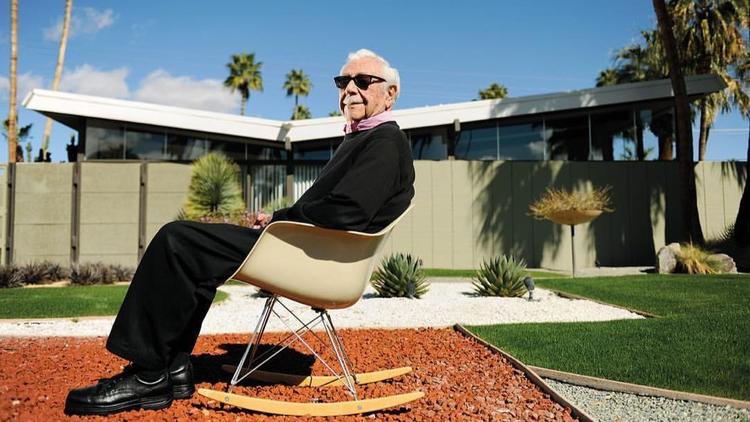Do you ever wonder where Modern homes came from? They didn’t just appear. Frank Lloyd Wright rightfully gets credit for many of the things we recognize in a Modern home, but William Krisel was an architect that made Mid Century Moderns available to tens of thousands of homeowners. Modern was no longer reserved for custom homes. Modern became mainstream. Sadly, William Krisel passed away in early June, 2017. His houses and legacy remain.

William Krisel is most remembered for his impact on the architectural landscape of Southern California, and most notably Palm Springs, just as it was beginning to boom. There was a great demand for new housing, but there was also that great demand for independence typical of the region. Architects are known for challenging convention. He challenged one that most architects wouldn’t consider. He decided to work with developers to see if it was possible to create homes and neighborhoods that brought three things together: modernity, efficiency, and individuality. He succeeded.
Modernity was partly style and partly materials. Hip and gable roofs weren’t as necessary. Better weatherproofing made it easier to flatten the roofline. Bigger windows were possible. Gone were some of the constraints of wood-frame houses, especially in an area known for brick and adobe. Instead of having a peaked roof with the water draining to gutters on the side, he incorporated butterfly roofs where the rain drained to the middle and ran to one or two low points. No more need for gutters.

Homeowners may appreciate efficiency, but developers demanded it. They needed house plans that were simple and similar to the rest of the neighborhood. The greater the similarities, the better the prices for the materials and the less training required for the construction crews. Lower costs meant the homes were more affordable making it easier to sell and fill the developments.
Too much efficiency runs into a backlash from buyers. To avoid that, he managed to create house plans that were easily customizable. Even using the same materials and basic layout, each home could be individualized thanks to ingenuity. Instead of a grid of streets populated with carbon copies, residents would see variety and opportunities for further creative expression.

In a recent interview on NPR he captured it nicely,
“GUILHEM: The small homes could be built quickly, efficiently and, most importantly, affordably. Buyers in the late 1950s got…
KRISEL: A hundred-by-hundred lot all fenced in, landscaped, modern design, air condition, swimming pool, all for $29,900.” – NPR
To do so with any design would be worth celebrating. To do so while creating a new unconventional convention is why he is so widely acclaimed now. By the end of his career he could take credit for about 40,000 homes.


He worked on more than homes. There are also signature apartment and commercial buildings; but one of the advantages of his homes is that they continue to come onto the market providing opportunities for fans to buy and live in one of his creations.
By definition, Modern design isn’t static. Today’s architects continue to explore possibilities and today’s buyers continue to enjoy living the clean and uncluttered lifestyle that welcomes nature into the home. William Krisel’s contribution was more revolution than evolution. He developed ideas, changing them from abstract and exclusive into tangible and widespread. Thank you, William Krisel.
